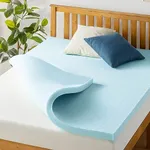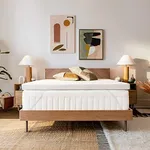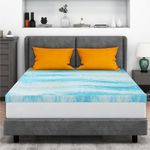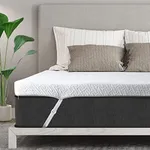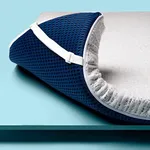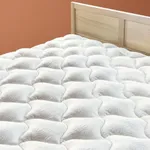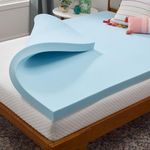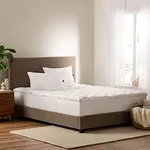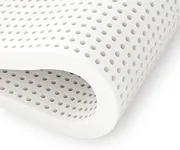Buying Guide for the Best toppers
When it comes to choosing a topper for your bed, it's important to consider several key factors to ensure you get the best fit for your needs. A topper can significantly enhance your sleeping experience by providing additional comfort, support, and even extending the life of your mattress. Here are the key specifications you should consider when selecting a topper, along with explanations to help you make an informed decision.MaterialThe material of a topper is crucial as it determines the comfort, support, and durability. Common materials include memory foam, latex, feather, and down alternative. Memory foam offers excellent support and pressure relief, making it ideal for those with back pain. Latex is durable and provides a bouncy feel, suitable for those who prefer a firmer surface. Feather and down alternatives are softer and provide a plush feel, great for those who like a cozy, cloud-like experience. Choose a material based on your comfort preference and any specific needs like support or hypoallergenic properties.
ThicknessThickness affects the level of comfort and support a topper provides. Toppers typically range from 1 to 4 inches thick. A 1-2 inch topper adds a slight layer of comfort and is suitable for those who want to enhance their mattress without significant change. A 3-4 inch topper offers more substantial support and comfort, ideal for those looking to significantly alter the feel of their mattress or alleviate pressure points. Consider your current mattress condition and how much change you want in your sleeping surface when choosing the thickness.
DensityDensity, particularly in memory foam toppers, indicates the firmness and support level. It is measured in pounds per cubic foot (PCF). Low-density foam (2-3 PCF) is softer and more plush, suitable for those who prefer a softer sleeping surface. Medium-density foam (3-4 PCF) offers a balance of comfort and support, ideal for most sleepers. High-density foam (4-5 PCF) is firmer and provides excellent support, making it suitable for those with back pain or who prefer a firmer feel. Choose the density based on your comfort preference and any specific support needs.
Cooling FeaturesCooling features are important for those who tend to sleep hot. Some toppers come with gel-infused foam, breathable covers, or other cooling technologies to help regulate temperature and keep you cool throughout the night. If you often find yourself overheating during sleep, look for toppers with these cooling features to ensure a comfortable sleeping environment.
AllergiesIf you have allergies, it's important to choose a hypoallergenic topper. Materials like latex and down alternatives are often hypoallergenic and resistant to dust mites and other allergens. Additionally, some toppers come with antimicrobial treatments to further reduce the risk of allergens. Consider your allergy needs and look for toppers that specifically mention hypoallergenic properties to ensure a healthy sleeping environment.
CoverThe cover of a topper can affect its comfort and durability. Look for covers made from breathable, soft, and durable materials like cotton or bamboo. Some covers are also removable and machine washable, which makes maintenance easier. Consider the ease of cleaning and the feel of the cover material when making your choice.
